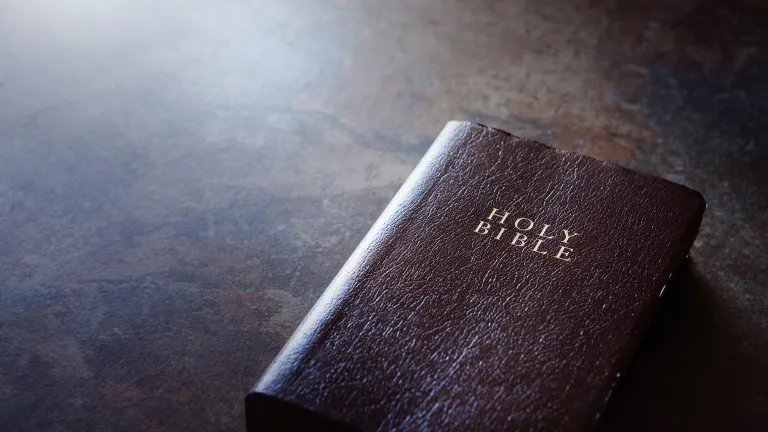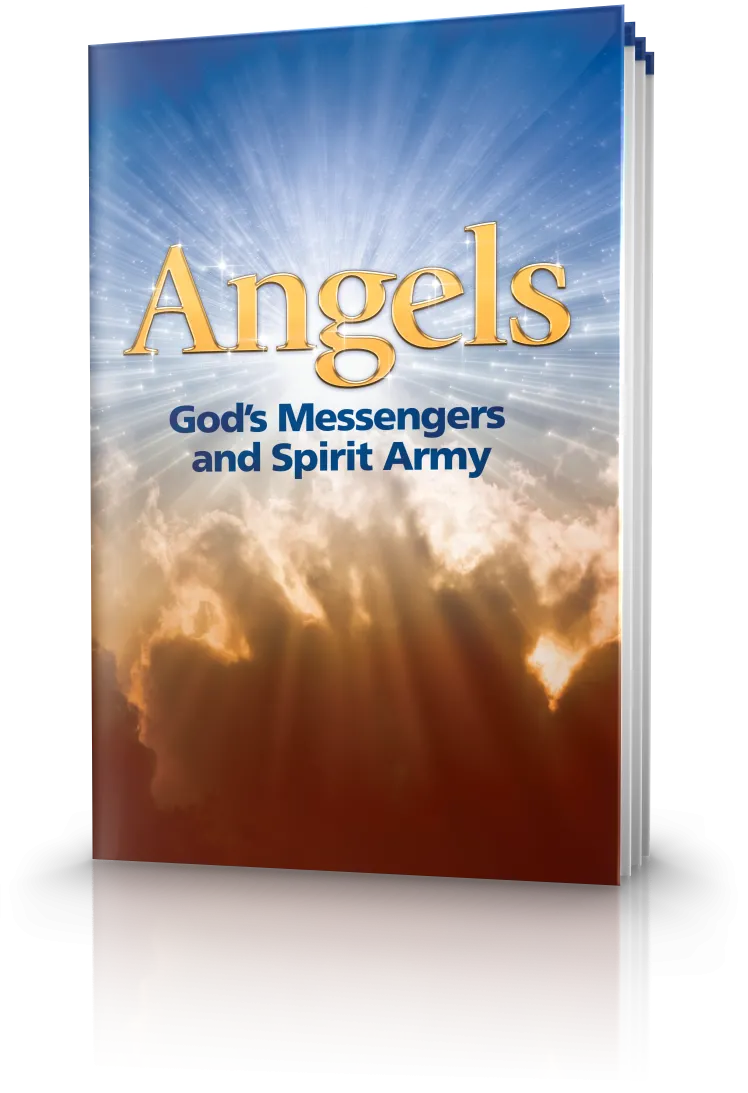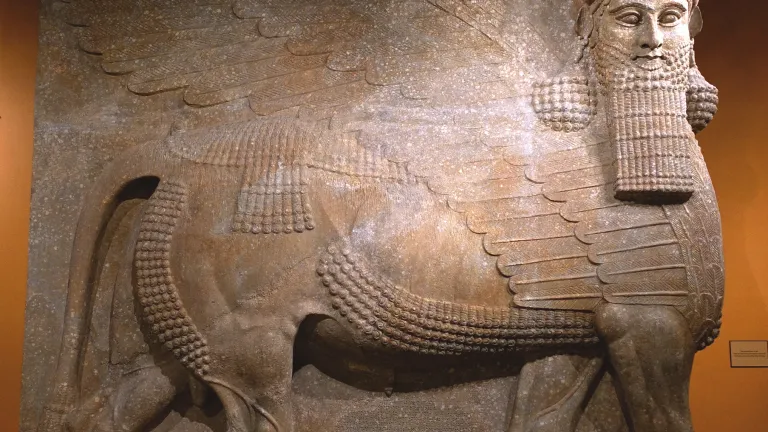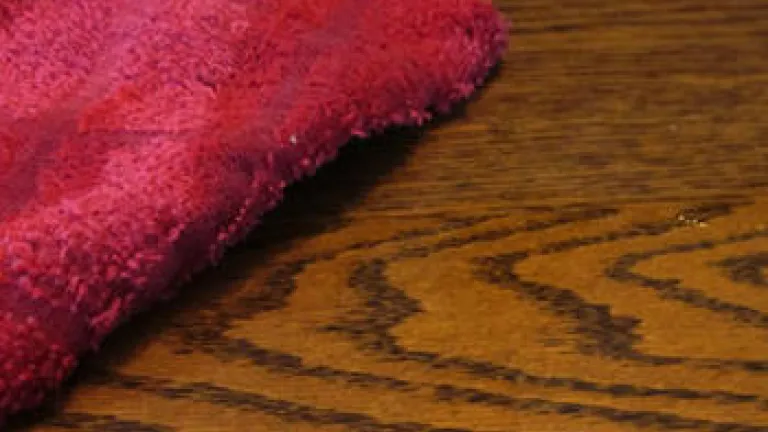Different Kinds of Angels

Are all angels alike? Scripture reveals several different kinds of angels, including cherubim, seraphim and several other kinds of spirit beings. What are they like?
Many angels sing praises to God the Father and Jesus Christ on a regular basis. In Revelation 5:11-13 we read: “Then I looked, and I heard the voice of many angels around the throne, the living creatures, and the elders; and the number of them was ten thousand times ten thousand, and thousands of thousands, saying with a loud voice: ‘Worthy is the Lamb who was slain to receive power and riches and wisdom, and strength and honor and glory and blessing!’”
“And every creature which is in heaven and on the earth and under the earth and such as are in the sea, and all that are in them, I heard saying: ‘Blessing and honor and glory and power be to Him who sits on the throne, and to the Lamb, forever and ever!’”
This praise from this massive angelic choir seems to go on continually!
Yet it appears that these angels are not all the same.
As we saw with the examples of Michael and Gabriel, angels have different kinds of responsibilities. And interestingly, the Bible shows that there are different classifications of angels too—not all are alike!
Let’s look at the categories of angels mentioned in Scripture.
Seraphim—burning ones
In relating the story of his calling, the prophet Isaiah tells us something remarkable: “In the year that King Uzziah died, I saw the Lord sitting on a throne, high and lifted up, and the train of His robe filled the temple. Above it stood seraphim; each one had six wings: with two he covered his face, with two he covered his feet, and with two he flew. And one cried to another and said: ‘Holy, holy, holy is the Lord of hosts; the whole earth is full of His glory!’” (Isaiah 6:1-3).
As with Ezekiel some years later (see Ezekiel 1:10), Isaiah here sees a vision of God on a throne, attended by spirit beings, at the heavenly temple. These angelic spirits, identified as seraphim, could be a different class or type of angel from the cherubim in Ezekiel. The seraphim are not described extensively, but we may note these features:
• Seraphim have six wings.
• They cover their faces with a set of wings.
• They cover their feet with a set of wings.
• They fly with a set of wings.
• Seraphim form may resemble a person standing upright—but with wings.
• They hover above God’s throne.
• They sing praises to God a lot!
Observe that the seraphim here have six wings instead of the four wings of the cherubim in Ezekiel (which we’ll see more about shortly). However, it’s possible that these beings are not so different after all.
The word seraphim has been left untranslated here. It literally means “burning ones.” Yet the word seraph is translated elsewhere in Scriptures as “fiery serpent” and with another word later in the book of Isaiah as “fiery flying serpent” (Isaiah 14:29; Isaiah 30:6; compare Numbers 21:6; Numbers 21:8; Deuteronomy 8:15). Notice Numbers 21:6 in the Tanakh, the newer Jewish Publication Society translation of the Holy Scriptures: “The Lord sent seraph serpents against the people.”
It is commonly thought that the term fiery (i.e., burning) serpents connotes the sting of their bites. Yet it may actually refer to the reflective quality of their glassy scales, by which they are shiny. Interestingly, the Hebrew word for serpent, nachash, literally means “shining one.” Indeed, a literal translation of Numbers 21:6 would be: “And sent the Eternal among the people the shining ones, the burning ones, and they bit the people.”
Notice alsoNumbers 21:8 in the Tanakh: “Then the Lord said to Moses, ‘Make a seraph figure and mount it on a standard.’” And Moses made a bronze nachash or serpent (Numbers 21:9). In fact, the word for bronze is another form of nachash, apparently because of its shiny quality. In any case, it appears that seraph and nachash are interchangeable terms (see also E.W. Bulinger, The Companion Bible, Appendix 19).
What then of the seraphim Isaiah sees? According to Vine’s Complete Expository Dictionary of Old and New Testament Words, “it may imply either a serpentine form (albeit with wings, human hands, and voices) or beings that have a ‘glowing’ quality about them” (1985, Old Testament Section, “To Burn,” p. 27). Of course, every angel, it should be noted, is a shining being of light (compare Revelation 10:1; Revelation 18:1), also described as a “flame of fire” (Hebrews 1:7).
All of this is rather interesting when we consider that Satan is referred to in Scripture as a serpent and even a “fiery red dragon” (Revelation 12:4; Revelation 12:9). This seems too much like “fiery flying serpent” (i.e., seraph) to be mere coincidence. And yet Satan is distinctly referred to in Ezekiel 28:14-16 as a cherub. Perhaps, then, a cherub and a seraph are the same thing.
Granted, there do appear to be a few minor differences between the creatures Isaiah and Ezekiel saw—and later the apostle John (compare Revelation 4:6-8). In that case, perhaps cherubim are a class of seraphim, yet different from the class Isaiah saw. However, it could be that Ezekiel’s cherubim were actually the same creatures Isaiah saw, but viewed in a different activity so that Ezekiel did not see the extra pair of wings Isaiah and John saw.
Or perhaps these creatures are capable of shifting appearance or form even in the spirit realm—sometimes having six wings and sometimes four, sometimes having four faces and sometimes one. Though we may not be able to ascertain a reason for this, we should not suppose it out of the question—since righteous angels are even able to appear to us as human beings, which is not their natural form. We must remember that these are spirit beings, existing in a spirit dimension not bound by the physical laws of our physical realm.
Cherubim—with four faces
Many of us have heard of the cherubim. But sadly, what has been depicted in artwork over the millennia is almost always inaccurate. The little baby cherubs with two wings are not at all like the true cherubs of God. (In the Hebrew language, cherub, the ch pronounced as a k, is singular and cherubim is plural—the same with seraph and seraphim.)
As we’ve seen, Lucifer once was an anointed cherub at God’s throne (Ezekiel 28:13-14). But he was cast out, and God then referred to him as Satan, meaning “enemy” or “adversary.”
God rode on a cherub to save David! The power of the angelic realm is revealed in this passage from 2 Samuel:
“In my distress I called upon the Lord, and cried out to my God; He heard my voice from His temple, and my cry entered His ears. Then the earth shook and trembled; the foundations of heaven quaked and were shaken, because He was angry. Smoke went up from His nostrils, and devouring fire from His mouth; coals were kindled by it. He bowed the heavens also, and came down with darkness under His feet. He rode upon a cherub, and flew; and He was seen upon the wings of the wind” (2 Samuel 22:7-11). This passage from 2 Samuel is repeated in Psalm 18:7-10. Here is just verse 10: “And He rode upon a cherub: yea and did fly upon the wings of the wind.”
And then Psalm 80 talks about God dwelling between the cherubim: “Give ear, O Shepherd of Israel, You who lead Joseph like a flock; You who dwell between the cherubim, shine forth!” (Psalm 80:1). A number of other verses say the same, as we saw earlier.
Now let’s look at an awesome description of these cherubs at God’s very throne. Here is what Ezekiel saw God riding upon. He describes a frightening, awesome vision!
“The word of the Lord came expressly to Ezekiel the priest, the son of Buzi, in the land of the Chaldeans by the River Chebar; and the hand of the Lord was upon him there. Then I looked, and behold, a whirlwind was coming out of the north, a great cloud with raging fire engulfing itself; and brightness was all around it and radiating out of its midst like the color of amber, out of the midst of the fire. Also from within it came the likeness of four living creatures.
“And this was their appearance: they had the likeness of a man. Each one had four faces, and each one had four wings. Their legs were straight, and the soles of their feet were like the soles of calves’ feet. They sparkled like the color of burnished bronze. The hands of a man were under their wings on their four sides; and each of the four had faces and wings. Their wings touched one another. The creatures did not turn when they went, but each one went straight forward.
“As for the likeness of their faces, each had the face of a man; each of the four had the face of a lion on the right side, each of the four had the face of an ox on the left side, and each of the four had the face of an eagle . . . As for the likeness of the living creatures, their appearance was like burning coals of fire, like the appearance of torches going back and forth among the living creatures. The fire was bright, and out of the fire went lightning . . .
“When they went, I heard the noise of their wings, like the noise of many waters, like the voice of the Almighty, a tumult like the noise of an army; and when they stood still, they let down their wings . . . And above the firmament over their heads was the likeness of a throne, in appearance like a sapphire stone; on the likeness of the throne was a likeness with the appearance of a man high above it . . .
“Like the appearance of a rainbow in a cloud on a rainy day, so was the appearance of the brightness all around it. This was the appearance of the likeness of the glory of the Lord. So when I saw it, I fell on my face, and I heard a voice of One speaking” (Ezekiel 1:3-10; Ezekiel 1:13; Ezekiel 1:24-28).
The prophet Ezekiel later records further vision about the cherubim and their wheels and their supernatural movement through the spirit world:
“The cherubim appeared to have the form of a man’s hand under their wings. And when I looked, there were four wheels by the cherubim, one wheel by one cherub and another wheel by each other cherub; the wheels appeared to have the color of a beryl stone . . .
“And their whole body, with their back, their hands, their wings, and the wheels that the four had, were full of eyes all around . . . Each one had four faces: the first face was the face of a cherub, the second face the face of a man, the third the face of a lion, and the fourth the face of an eagle. And the cherubim were lifted up. This was the living creature I saw by the River Chebar . . .
“And the cherubim lifted their wings and mounted up from the earth in my sight. When they went out, the wheels were beside them; and they stood at the door of the east gate of the Lord’s house, and the glory of the God of Israel was above them . . . This is the living creature I saw under the God of Israel by the River Chebar, and I knew they were cherubim” (Ezekiel 10:8-9; Ezekiel 10:12; Ezekiel 10:14-15; Ezekiel 10:19-20).
Note that the four faces in chapters 1 and 10 are the same except that instead of the ox face in chapter 1, chapter 10 has a cherub face. This must mean that the primary face of the cherub is an ox face.
So, once more, what are cherubs or cherubim like?
• Cherubim are described as having four wings.
• Two cherubim cover God’s throne with their wings.
• Four dwell under the Lord’s mobile throne, holding it up.
• They each seem to have a general humanlike form but a head with four faces!
Cherubs are described as transporting God’s throne on supernatural “wheels” full of “eyes” (though these “wheels” may be two more whirling wings, with the appearance of “eyes” being an effect of that, giving a total of six wings—just as the seraphim were said to fly with just two of their wings).
Again, cherubim may be quite different from seraphim, or they might be essentially the same, or cherubim may be one of multiple types of seraphim. The Bible doesn’t give us a complete explanation.
Interestingly, we find composite creatures in ancient art and mythology bearing similarities with the cherubim Ezekiel saw and with the four living creatures we’ll consider next (see “Do We Have Reminders of Cherubim From the Ancient World?”).
The “four living creatures” in Revelation and other animal parallels
Ezekiel described what he saw as “four living creatures” (Ezekiel 1:5). The book of Revelation also reveals “four living creatures” at God’s throne in heaven. Here is what we can glean from what was revealed to the apostle John:
• The four living creatures are in the midst of God’s throne and round about it.
• They have six wings (like the seraphim).
• Each has the likeness of a creature represented by one of the four different cherubim faces.
• They are full of eyes.
• The four living creatures never rest.
• They praise God continually.
John explains what he saw in Revelation 4: “Immediately I was in the Spirit; and behold, a throne set in heaven, and One sat on the throne . . . Before the throne there was a sea of glass, like crystal. And in the midst of the throne, and around the throne, were four living creatures full of eyes in front and in back” (Revelation 4:2; Revelation 4:6). They appear to have eyes in the back of their heads! Or, if the eyes are associated with the wings, perhaps this is similar to peacock plumage—where what appear to be eyes can be seen from either side. (The wings of some butterflies and moth wings are also decorated with what appear to be eyes.)
“The first living creature was like a lion, the second living creature like a calf, the third living creature had a face like a man, and the fourth living creature was like a flying eagle. The four living creatures, each having six wings, were full of eyes around and within. And they do not rest day or night, saying: ‘Holy, holy, holy, Lord God Almighty, who was and is and is to come!’” (Revelation 4:7-9).
These beings, too, may not be so different from the cherubim and seraphim —considering that they are beyond our normal physical dimensions and might appear in shifted ways and can possibly change form.
Something else to note here is which faces and forms came first—those of the angelic beings or those of physical animals on earth? As we’ve seen earlier, the angels were created first. So rather than an angel having a lion face, we might consider that a lion has an angel face. An eagle has an angel face. An ox has an angel face.
And perhaps more of the animals in the physical realm are patterned after the angels. We saw that the Lord came riding on a cherub, but in Revelation 19 we see Christ returning on a white horse. Is this just a figurative picture? Or are these angels that look like horses? Or perhaps cherubim that are able to take on the form of horses? This is quite fascinating to contemplate.
The “twenty-four elders”
Making up a final category of angelic spirit beings are those referred to as the “twenty-four elders” at the throne of God. Revelation 4 through 5 outlines what we know of them:
“Around the throne [of God] were twenty-four thrones, and on the thrones I saw twenty-four elders sitting, clothed in white robes; and they had crowns of gold on their heads . . . Whenever the living creatures give glory and honor and thanks to Him who sits on the throne, who lives forever and ever, the twenty-four elders fall down before Him who sits on the throne and worship Him who lives forever and ever, and cast their crowns before the throne, saying: ‘You are worthy, O Lord, to receive glory and honor and power; for You created all things, and by Your will they exist and were created’ . . .
“And I looked, and behold, in the midst of the throne and of the four living creatures, and in the midst of the elders, stood a Lamb [Jesus Christ] as though it had been slain, having seven horns and seven eyes, which are the seven Spirits of God sent out into all the earth. Then He came and took the scroll out of the right hand of Him who sat on the throne.
“Now when He had taken the scroll, the four living creatures and the twenty-four elders fell down before the Lamb, each having a harp, and golden bowls full of incense, which are the prayers of the saints. And they sang a new song, saying: ‘You are worthy to take the scroll, and to open its seals; for You were slain, and have redeemed us [or ‘them,’ as other versions correctly have] to God by Your blood out of every tribe and tongue and people and nation, and have made us [that is, them] kings and priests to our God; and we [they] shall reign on the earth’” (Revelation 4:4; Revelation 4:9-11; Revelation 5:6-10).
So we see:
• The 24 elders are dressed in white clothing.
• Each elder has a golden crown on his head.
• They sing praises to God and sing hymns on our behalf!
• These beings, bearing crowns, evidently have a role in administration in the angelic realm—yet their rule is obviously in submission to the rule of God.
So we see that the Bible reveals different classifications of angels. They are quite different from the common depictions of Hollywood movies, television shows and classic art. One thing is for sure—they are truly astounding and amazing beings!






